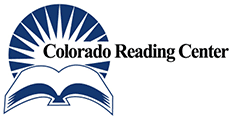The -le Endings
Once students learn about multiple syllable words, how to break them down into individual syllables, and how open and closed syllables affect the word, they can then move on to learning about different endings that add an extra syllable.
Before they jump into endings that change the tense of a word, they learn about a very common ending that can only be understood with a base knowledge of multiple syllables: the -le ending. Being able to understand the nuances of this ending will help students when decoding or spelling words with this ending.
Tutor: “Let’s talk about another ending we have in multisyllable words. What would ‘-le’ say at the end of a word?”
Student: “Lee.”
Tutor: “You would think so, but we already have an ending for /lee/ ‘ly.’ How about in this word.” The tutor writes out the word ‘table.’
Student: “/tay-bull/”
Tutor: “Perfect! This ‘le’ ending is a rule breaker. Instead of saying /lee/ it will say /ul/. Also it doesn’t follow the rules for syllable division. The ‘le’ will actually grab another consonant that’s in front of it. So when we divide ta/ble the le is taking the b with it. That means the first syllable is open and the vowel is saying its name.”
“What about the word puddle? Is the first syllable vowel saying its name or sound?”
Student: “/p/…/u/ its sound!”
Tutor: “Right you are. Because we want the vowel to say its sound, and because the “le” breaks the rules and takes a consonant, we get to double up the ‘d’ in puddle.”
“Now -le can only grab specific consonants.”
The tutor makes the “le card” with: ble, cle, dle, fle, gle, kle, ple, sle, tle, zle
“Here’s the catch.”
Student: “There’s always a catch!”
Tutor: “I know. The catch is there are three exceptions to the “-le” ending. They are ‘m, n, and v.’ With these letters instead of ‘le’ we are going to use ‘el’. So I will put mel, nel, vel on your card at the bottom. Even though we switched the letters, they will still say /ul/, as in “ the camel travels through the tunnel.” Pretty cool right?”
Student: “I guess…”
Tutor: “Don’t forget, we can double the consonant to make a closed syllable so the vowel will say its sound.”




